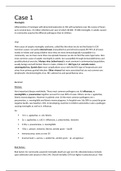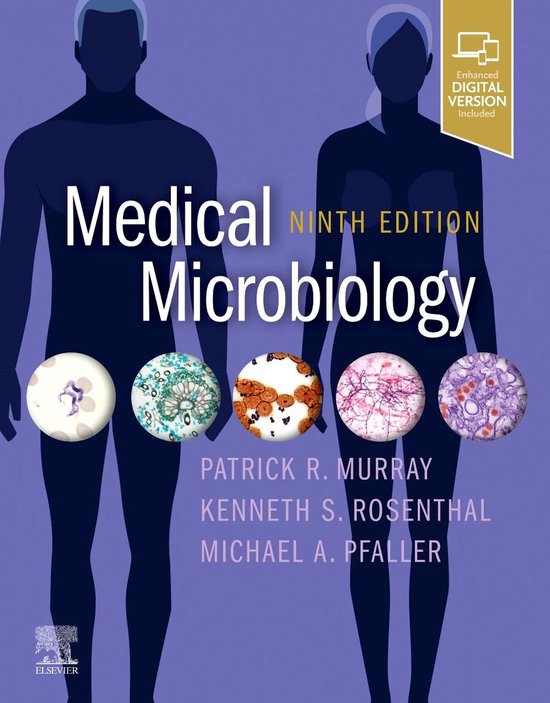Case 1
Meningitis
Inflammation of meninges with abnormal leukocytes in CSF with symptoms over the cuorse of hours
up to several days. 15 million infections per year of which 30 000 -75 000 meningitis. In adults caused
in community acquired by different pathogens than in children.
Viral
Main cause of aseptic meningitis syndrome, called like this when we do not find bateri in CSF.
Common causes: non polio enteroviruses (coxsackievirus and echovirus types) 85-95% of all cases
mostly in infants and young children since they are most immunologically susceptible in a
community, we can have more than one episode however we do not find the same type twice. Also
most common cause of aseptic meningitis in adults. Are susceptible through immunodeficiency and
possibly physical exercise. Mumps virus (arboviruses) is most common in unimmunized population,
usually benign and self limited. More in males, childen 5-9. HSV type 1,2, varicella zoster,
cytomegalovirus, Epstein Barr most complications occur with the HSV type of herpesviruses and
arises from primary genital infection. Other viruses that were associated but are not common are
lymphocytic choriomeningitis virus, HIV, adenovirus and parainfluenza virus.
Bacterial
Etiology
Very important disease worldwide. Three most common pathogens are: h. influenzae, n.
meningitidis, s. pneumoniae together account for over 80% of cases. Others can be s. agalactiae,
listeria monocytogenes. However in patients over 16 the most common pathogens are s.
pneumoniae, n. meningitidis and listeria monocytogenes. In hospital over 16y 38% is caused by gram
negative bacilli, case fatality is 35%. In developing countries in children salmonella is also a pathogen
causing meningitis as well as h. influenza.
So:
<1m: s. agalactiae, e. coli, listeria
1y: s. agalactiae, e. coli, h. influenzae, s. pneumoniae, neisseira
2-50y: s. pneumoniae, n. meningitidis
>50y: s. pneum, neisseria, listeria, aerobic gram – bacilli
immunocomp: same as over 50
trauma head: s. aureus, s. epidermis, aerobic gram – (p. aeruginosa)
Risk factors
Risk factors for community acquired meningitis death are age over 60, obtunded status mentalis
upon admission and seizures in first 24h. Overall mortality 25% but higher in pneumococcal. Risk
,factors for unfavorable outcome were advanced age, presence of otitis or sinusitis, absence of rash,
low score on the Glasgow Coma Scale on admission, tachycardia, a positive blood culture, elevated
erythrocyte sedimentation rate, thrombocytopenia, and a low CSF white blood cell count. Alcoholic
patients with community-acquired bacterial meningitis are at higher risk for unfavorable outcome.
Pathophysiology
What happens, the host gets the new organism via the nasopharynx, there it colonizes in the
mucosa. N. meningitidis has pili that mediate adherence to nasopharyngeal epithelial cells and they
are 80% of meningococcal strains from CSF of patients with this meningitis. The attach to non ciliated
nasopharyngeal epithelial cells via a surface receptor (CD46) and then are transported by
phagocytosis via vacuole. The host can stop this by IgA, ciliary activity, anticapsular antibodies and
pilin phosphotransferase.
Then they get into the blood stream and must overcome new host defense. The bacterial capsule
inhibits neutrophil phagocytosis and resists complement bactericidal activity. Against this the host
activates the complement system and patients which do not have that are susceptible for
meningococci infection. Also there is inflammatory response, coagulation and fibrinolytic pathways.
Then there is meningeal invasion. Maybe bacteria enter via intercellular or transcellular routes or
leukocytes or non hematogenous routes via cranial nerves. BBB is against this invasion however
pathogens can cross it transcellularly or paracellularly, in infected phagocytes or by a combination of
those. N. meningitidis was shown to adhere to the endothelium of choroid plexus and meninges and
it needed PilC protein to cross the BBB.
Remaining in the CSF/subarachnoid space is possible because the bacterium has a polysaccharid
capsule and the CSF has low opsonic activity we have low complement, low immunoglobulins there.
We see that leukocytes move into the space as well. The invasion of leukocytes may contribute to
the deleterious effects of inflammation within the brain with subsequent development of neuronal
damage.
Replication and lysis of bacteria in the subarachnoid space lead to release of bacterial virulence
components (e.g., peptidoglycan from gram-positive bacteria and lipo-oligosaccharide from gram-
negative bacteria), which triggers the inflammatory response and production and release of
inflammatory cytokines and chemokines (see later discussion).
Bacterial meningitis has been shown to increase permeability across the BBB. Then we get cerebral
edema which can be due to the BBB permeability (vasogenic), cellular swelling due to toxic factors
from neutro’s and bacteria (cytotoxic) obstruction of flow of normal CSF (interstitial edema,
hydrocephalus). The last one is what we measure as CSF outflow resistance which is the factors that
inhibit flow of CSF from subarachnoid space to major dural sinuses.
Meningitis also causes subarachnoid vessel vasculitis resulting in thrombosis or narrowing of them
and ischemia/infarction of underlying brain. ROS can contribute to higher water content ICP and
changes in regional blood flow which can lead to cerebral ischemia and necrotic apoptotic neuronal
injury.
, Symptoms
Fever, headache, meningismus, cerebral dysfunction signs (confusion, delitirum coma). However it
does vary by age:
Infant: subtle variable or even absent, no meningismus in neonates, however temperature
instability, high pitch crying, lethargy, no eathing, jaundice, vomitus, diarrhoea, respiratory
distress.
Adult: fever, nuchal rigidity, status mentalis change
Older: lethargy, obtundation, no fever, variable signs of meningeal inflammation.
Diagnosis
Nuchal rigidity:
o Kernig’s sign: extend knee passively when thigh is on your abdomen -> pain
o Brudzinski’s sign: supine passive flexion neck results in spontaneous flexion of hips
and knees
CSF characteristics






